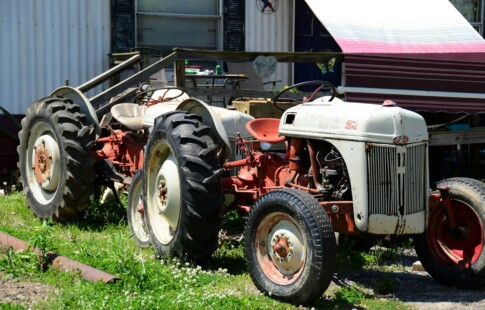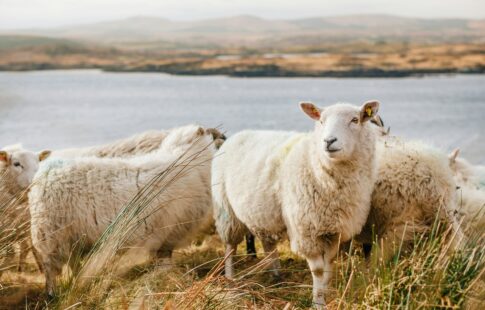
7 Tips for Planning a Sustainable Vegetarian Thanksgiving
We are reader-supported. When you buy through links on our site, we may earn affiliate commission.
Thanksgiving is a memorable holiday for many Americans. It’s a day families come together and celebrate togetherness and excellent food. The dinner menu is something people look forward to because of all the delicious food. The holiday is a fun time, but it can bring about wastefulness. Planning a vegetarian menu is a great start. Here are seven tips for planning a sustainable vegetarian Thanksgiving meal.
1. Buy in Bulk
Thanksgiving dinner can involve a few people or a hundred people. However many you plan on serving, buying in bulk is recommended as a sustainable practice. Stores like Sam’s Club and Costco are a couple of places where you can stock up on your groceries. Try to get everything you need in one trip so you can save gas and reduce your carbon emissions.
While at these stores, use recycled boxes and bags instead of single-use plastic bags. Most buy-in-bulk stores don’t have plastic bags, but using boxes is another way to practice sustainability. Plastic bags negatively impact the environment because they’re unable to break down and contribute to climate change.
2. Center Around Fruits and Vegetables
If this Thanksgiving is your first vegetarian one, don’t fret about coming up with a completely different menu than what you’ve made in the past. You can stick with the classics like green beans, roasted carrots, mashed potatoes, and sweet potato pie.
Because it’s the fall season, Thanksgiving is an opportune time to buy in-season fruits and vegetables, such as pumpkins, apples, Brussel sprouts, and more. Buying in-season produce is typically cheaper for the consumer and better for the environment because out-of-season crops must travel much longer distances to get to your grocery store.
3. Shop at a Farmers Market
To maximize sustainability for your vegetarian Thanksgiving, shop at a local farmers market to get your produce. These markets typically source their food from farmers around the area, creating a shorter travel time than a chain grocery store that imports produce from another state or country.
Another factor to consider is how local farms grow their food versus the practices of commercial farms. Local farmers typically use less fertilizer compared to large farms. Commercial farms often use chemical fertilizers, contaminating nearby water supplies and damaging other parts of the ecosystem.
4. Plan for Leftovers
Cooking a Thanksgiving meal at your house generally means a fridge full of leftovers. Don’t throw any food away unless it has already spoiled. Use freezer-safe containers to store the food for weeks and months. From a vegetarian Thanksgiving, vegetables can last around eight months in a freezer if you properly keep them.
Suppose you live alone or with only one or two other people. In that case, you may be unable to eat all the leftovers, or you don’t want to eat everything. Encourage your guests beforehand to bring leftover containers with them. If you find yourself with a load of food, get creative and repurpose it. For example, Thanksgiving vegetables taste great in soups, wraps, pasta and more.
5. Recycle Scraps
If you’re cooking a vegetarian Thanksgiving, you’ll likely find yourself with a peeler in one hand and a vegetable in the other. Some produce requires peeling because the peel has a purpose. However, even if they don’t serve an immediate purpose, you can save the scraps to promote sustainability and health. For example, the skin of potatoes has nutritional value with vitamin C and potassium.
If you don’t like fruit or vegetable skins, you can try composting them. This strategy is also helpful for scraps you’re unable to find a purpose for, such as eggshells and burnt and spoiled food. Composting is an excellent way to promote sustainability because it lessens landfills’ methane emissions and lowers your carbon footprint. This practice also reduces the human need for fertilizers because it enriches the soil, helping keep its moisture.
6. Encourage Greener Travel
Every year, millions of Americans travel for Thanksgiving. In 2021, 53.4 million people traveled for the holiday, marking the fifth year in a row where the number topped 50 million. The high volume of travel means more carbon emissions than what’s good for the planet. This Thanksgiving holiday, encourage yourself and others to practice sustainable efforts to contribute to the greater good.
If possible, take a bus or train instead of driving a car or flying on an airplane. Buses can be eco-friendly because they reduce the number of vehicles on the road. For example, say 100 people are riding a bus. None of the passengers is driving a car, reducing the congestion on the road. Less congestion means fewer emissions and better quality of the air.
Driving may be necessary, especially if you live in a more rural area. To reduce your carbon emissions, travel during times when there’s less traffic. For example, the day before Thanksgiving and the morning of will see some of the worst traffic, which will only worsen if a crash occurs. Bad weather in the late fall can worsen driving conditions around the holidays. Try traveling a few days before or early morning before congestion gets bad.
7. Reduce Paper and Plastic
When you have a large gathering of people, cleaning up is more manageable when everybody uses plastic plates and utensils. Though it’s less time-consuming, there are more eco-friendly practices for your holiday gatherings. Most plastic utensils you get from the store contain polystyrene, which destroys the planet. It degrades slowly, harming the environment and water sources because of its chemicals.
Instead, use reusable plates like your nice cutlery and plates in the cabinet. You may see increased dishes, but an energy-efficient dishwasher will be much better for the environment than throwing away plastic. If you plan on many people coming over, consider using biodegradable plates because they’ll decrease the dish load and make cleaning easier.
Planning a Green Vegetarian Thanksgiving
Thanksgiving is a time to be thankful for the positives happening in your life. The holiday brings comfort, laughter, and, best of all, fantastic food. With the holidays comes wasteful human practices, such as 200 million pounds of turkey meat wasted annually around the late November holiday. Organizing a vegetarian menu is a noble start if you’re planning a more sustainable holiday. Use these seven tips for planning a sustainable vegetarian Thanksgiving.
Share on
Like what you read? Join other Environment.co readers!
Get the latest updates on our planet by subscribing to the Environment.co newsletter!
About the author
Jane Marsh
Starting from an early age, Jane Marsh loved all animals and became a budding environmentalist. Now, Jane works as the Editor-in-Chief of Environment.co where she covers topics related to climate policy, renewable energy, the food industry, and more.





